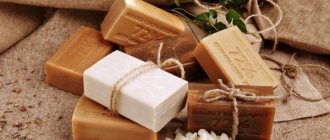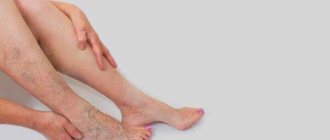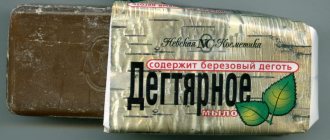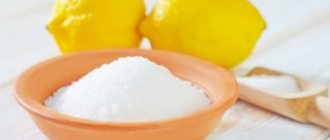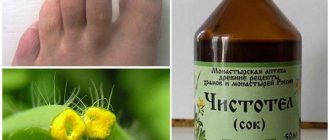Many of us know how difficult it is to cure onychomycosis. Even the use of medicinal antifungal drugs provides only temporary improvement. Soap and soda baths can significantly increase the effectiveness of products. Two components in this procedure can significantly soften the affected areas of the nails and feet, and also have a local antiseptic effect. After such baths, the pharmaceutical antifungal drug penetrates more deeply, which means it acts more effectively and quickly.
Soap for treating nail fungus
Laundry soap for nail fungus
Although soap is often used to treat nail fungus, it is not actually an antifungal agent. Therefore, it must be used as part of complex therapy. Baths with the addition of laundry soap will help cope with various adverse reactions of the body to the fungus. Soap will prevent the fungal infection from joining with a bacterial one, will help in the healing of small cracks, scratches, and will also stop the spread of inflammation.
So, laundry soap has:
- wound healing effect;
- anti-inflammatory;
- antimicrobial;
- softening;
- restorative effect.
It was used back when there were practically no drugs to treat fungus, and already in those days it established itself as a universal remedy for solving any skin problems. They used it to treat lichen, seborrhea, and eczema.
What is the effectiveness of laundry soap?
Our grandmothers also knew this method of treating fungus using ordinary laundry soap. After all, there were times when pharmacies did not sell a single drug without a prescription, and in general there were no truly 100% effective drugs. But soap was sold in any hardware store, and craftsmen quickly found alternative uses for it. Even in treatment.
In addition to its main antibacterial effect, laundry soap also has anti-inflammatory, softening and antiallergic properties.
If you follow the basic rules for treating the skin of your hands and feet with this product, you can not only remove the unpleasant odor, but also reduce itching. The main thing is to correctly observe the proportions and duration of the course of treatment, and in no case shorten it. Laundry soap can be used as a separate product or together with salt and iodine. It is very common to use soap with various special preparations, which allows you to treat fairly large areas. In this case, the results are better.
As already mentioned, the earlier treatment begins, the less negative consequences and financial costs there will be. It is also very important to begin treatment under the supervision of a doctor competent in this matter.
As for laundry soap, which is the subject of this article, this product is effective for the following reasons:
- it is not capable of causing allergies, which is why it has been used in the process of washing clothes for babies for many years and is recommended for use by allergy sufferers;
- it contains a large percentage of alkali, which is a harmful environment for most microorganisms;
- does not contain dyes or chemical additives, and therefore is not dangerous for pregnant women and children;
- recognized even in traditional medicine due to the fact that it effectively fights microbes and has an anti-inflammatory effect.
But it is worth emphasizing once again that laundry soap itself does not have an antifungal effect. If you start using it in the initial stages, then it will certainly be effective, but if the stage is already later or the disease is still progressing, then it should only be used in combination with drug treatment prescribed by a doctor (this can be gels, ointments , sprays or other antifungal agents). Soap can significantly speed up such treatment and achieve the desired recovery faster.
The household product is best used for baths. The results will not be long in coming if you use it together with birch tar or vinegar. We will discuss these and other methods of treating fungus with ordinary laundry soap below.
Operating principle
Bath with soap suds for fungus
Alkali kills most harmful microorganisms and also weakens fungi and viruses. To make laundry soap more effective, it is used not only as monotherapy, but also as part of complex treatment. Foam baths with laundry soap with the addition of salt, soda, and iodine have proven themselves in the treatment of nail fungus at any stage.
If treatment with laundry soap does not bring visible results within a week of use, you should consult a doctor and add traditional medications to folk medicine - creams, ointments, tablets.
What are the benefits of soda baths for feet?
Foot baths with soda and laundry soap are used not only in cosmetology for foot care, but also in the treatment of fungal infections of the nail plates and feet. This procedure has many advantages:
- Due to the presence of sodium bicarbonate (baking soda) and laundry soap, the solution has disinfecting properties. That is why with the help of such baths you can get rid of many problems with feet and nails.
- A soap and soda bath helps soften the skin of the feet and nail plates, which greatly facilitates the procedure for removing corns, keratinized areas susceptible to fungus, and thickened nail plates. This is a very important stage of antifungal therapy, since local antimycotic agents act more deeply and effectively on cleaned areas.
- Such procedures allow you to restore health and beauty to your nails, as they whiten the horny plates. Sometimes lemon juice is added to the solution for this purpose. Then its whitening qualities increase.
- For excessive sweating of the feet, baths relieve the unpleasant odor. The same can be said about fungal disease, because feet affected by fungus emit an unpleasant odor. Baking soda, which has a drying effect, will help you get rid of excessive sweaty feet forever.
- After such procedures, the healing processes of the skin in places of corns, calluses and cracks are activated.
- Exposure to a solution of soap and baking soda can eliminate itching of the skin, as well as remove minor swelling in the affected areas.
- It is also worth mentioning the general calming effect of these procedures. They eliminate the feeling of heaviness in the legs and relieve fatigue.
- Everyone knows the benefits of such procedures for colds, when warm foot baths can reduce the severity of symptoms, reduce the inflammatory process in the body, remove nasal congestion and headaches.
Important! You should not immerse your feet in hot water if you have a fever, varicose veins or a tendency to bleed.
If we talk about the effectiveness of a bath for fungal feet, then its action is aimed at neutralizing the acidic environment, which is considered favorable for the development of a fungal infection. Moreover, sodium bicarbonate prevents the proliferation of not only fungi, but also other pathogenic microorganisms.
Instructions for using Keto Plus shampoo and cheap analogues
It is worth remembering that a contraindication for baths is the presence of open wounds, erosions and ulcers on the skin of the legs. They are also not used for cardiovascular diseases and oncology.
How to prepare your feet for soap treatment
In order for the laundry soap solution to produce results, it must penetrate as deeply as possible into the nails damaged by the fungus. To do this, you can first make a bath of hot water and softening shampoo. Soak your nails in a 50-degree bath and trim them short. It is also worth going over the top of the nail with a nail file, especially if they have already transformed into growths. If your nails are too hard, you should steam them as best as possible before cutting them.
After you have removed as much damaged nails as possible, you can begin treatment with laundry soap. Use either bubble baths or grate soap and apply to your nails. Wrap them with a bandage and keep them on for 2 to 8 hours.
How to prevent foot fungus
Treatment of onychomycosis takes a long time. For baths and compresses with laundry soap to show their effect, you need to repeat the procedure for several months. It is easier to prevent the development of the disease using preventive methods:
- Feet should be clean and dry.
- When treating nails in a salon, ensure that the instruments are sterile.
- Wear flip flops in the shower at the gym, pool, etc.
- Change socks every day.
- Avoid wearing shoes that make your feet hot and sweaty.
- Use laundry soap to wash your feet to prevent fungus.
Baths of laundry soap against fungus
Baths of laundry soap will reduce the spread of nail fungus and relieve the main symptoms - itching, pain, redness. For the bath you should take water at about 50-55 degrees. Soap should be dark, without cosmetic additives (except tar), and bar soap. Using a coarse grater, rub a third of the bar into the water, stir well until dissolved. If the water has cooled, add boiling water. Place your nails in the bath and keep them there for at least 30 minutes.
Wipe dry using a towel, wait until completely dry and put on socks or gloves, depending on which nails were damaged by the fungus.
To make the soap more effective, apply an antifungal agent to your nails in the form of a spray, ointment or cream. You will find a wide selection of these drugs at any pharmacy. For example, Clotrimazole has proven itself to be excellent.
Benefits of use
If you or another family member suffers from a fungal disease, then such a soap bar should definitely be in your arsenal of home remedies, since it has many advantages:
- This environmentally friendly product can be used for hygiene and treatment of young children, pregnant and lactating women and the elderly. It is suitable even for allergy sufferers.
- With its help, you can create an alkaline environment, which will be destructive for most harmful microorganisms, including fungi.
- If one of the family members has a fungal disease, all other household members should wash their hands and feet once a day with this product to prevent the disease.
- It is suitable for treating shoes and washing clothes of a person suffering from a fungal disease.
- A solution of such soap can be used to treat surfaces and wash floors to eliminate fungal spores and prevent their spread.
Laundry soap and soda
Baking soda perfectly complements the action of laundry soap. Both ingredients have worked well when used as hot baths for nails. For the bath, you will need to coarsely grate 2 tablespoons of soap per 5 liters of water and add 2 tablespoons of soda. You can add 50 ml of vinegar. Mix everything until the soap dissolves. Keep your nails in the bath for 15 to 40 minutes. Dry, put on clean socks or gloves. If the fungus has affected your toenails, do not wear shoes for 2-3 hours.
A bath based on soap, soda and vinegar will defeat the fungus
Disease Prevention
Nail fungus can easily become infected. This usually happens by contact. But it is enough to follow a few rules to protect yourself from the disease:
- daily change of socks, golf, tights;
- second shoes in places where human feet can come into contact with fungus (swimming pools, baths);
- individual means (washcloths, towels) and compliance with personal hygiene rules;
- in everyday life, each family member should have his own slippers;
- wearing dry (not wet!) comfortable shoes;
- use of individual pedicure accessories;
- use pumice to remove old skin to prevent bacterial growth;
- upon contact with an infected person, disinfect hands and wash contaminated socks.
Laundry soap and tar
Birch tar is a natural and healthy product that is obtained by processing birch bark. Tar is known for its disinfecting properties. It kills germs, bacteria and fungi. It is thanks to this last property that it is actively used in the treatment of nail fungus. It can be used either separately or as part of various recipes against fungus. Tar is sold in pharmacies in the form of a liquid that can be added to medicinal baths. We will tell you about one of the most effective recipes against nail fungus, based on a mixture of laundry soap and tar.
Tar soap for fungus
For the bath, take a bar of laundry soap and tar, which is a blue-green oily liquid. Pour a tablespoon of tar into 5 liters of hot water, and also add 4 tablespoons of coarsely grated soap. Stir. Use this nail bath for 7 days daily.
After the procedure, apply an antifungal cream or other product recommended by your doctor to your nails. Remember that treating a fungus on your own is less productive than after consulting a doctor who will prescribe medications suitable for your stage of the disease.
Rules for fighting fungus
- Daily hygiene of extremities. You will need to wash your feet after a walk, in the morning and in the evening. If you have nail fungus, avoid hot foot baths. The feet are washed with cool water, which retards the growth of the pathogen. After the procedures, the feet must be wiped dry and left open.
- Removing old shoes or treating them with formaldehyde solution. The inside of the shoe is infected with fungus. It is impossible to get rid of fungal spores by regular washing, even if the smell disappears for a while. We have prepared a separate article for you on how to treat shoes against fungus.
- When walking and during physical activity, the foot must breathe; wearing closed shoes is not recommended. Gradually, the feet begin to sweat, and the fungus begins to develop faster in a humid environment. If your nails have an unpleasant appearance, mesh moccasins are suitable.
- It is contraindicated to wear someone else's shoes. This will increase the risk of infecting another person or worsen the healing process if the owner has mycosis in the open stage. Also, do not use other people's personal hygiene items - soap, towels, scissors and nail files.
Soap and salt bath
Salt is a natural antiseptic. It prevents bacteria, viruses, and fungi from spreading. At the same time, sea salt is famous for the fact that it draws out all infections from the skin and nails. Of course, this property of salt could not go unnoticed by traditional medicine, so salt is actively used not only to treat sore throats, abscesses, rhinitis, but also to get rid of such an unpleasant disease as nail fungus.
To make a more effective bath, take 1 tablespoon of grated laundry soap for 1 tablespoon of salt. We keep our nails in this bath for 15-30 minutes, after which we wipe them dry, cut off the softened parts of the nails and apply anti-fungal cream. This procedure must be carried out at least every other day, and then the effect will occur within 1-2 weeks.
There are cases when methods of treating nail fungus based on laundry soap do not bring results. Each such specific case should be dealt with by a dermatologist.
Which soap should you choose?
For treatment, it is better to use 72% laundry soap. However, it is not an independent means of treatment and should be used in complex therapy in conjunction with a local antimycotic drug prescribed by a doctor. It is also a wonderful preventative.
When choosing a quality product based on fats of plant and animal origin for the treatment of nail fungus, you need to pay attention to the following criteria:
- The color should be dirty gray (the darker the better). Light soap is ineffective.
- There must be a specific smell that not everyone likes, but this is a guarantee that the composition does not contain perfume fragrances.
- According to GOST, soap is produced at 40, 60 and 72%. For medicinal purposes, only products labeled 72% are used.
- Pay attention to the composition. There should be no unnatural, synthetic components, dyes, fragrances or other foreign chemicals.
How long to treat fungus with soap
Treatment of fungus with soap depends not only on the stage of the disease, but also on the characteristics of the body and the patient’s immunity. Therefore, in each specific case, the time from the start of treatment to complete recovery is different. On average, treatment will take at least 2-3 weeks, and it is possible to completely get rid of the fungus only when the diseased nail grows back and is completely cut off.
When using laundry soap, the healing process can be accelerated, especially if the treatment was comprehensive - using traditional medicine. Only in this case can we talk about cure without the possibility of relapse. If there are no visible results within a month and the disease causes discomfort, consult a doctor who will adjust the drug use algorithm or recommend a stronger remedy.
